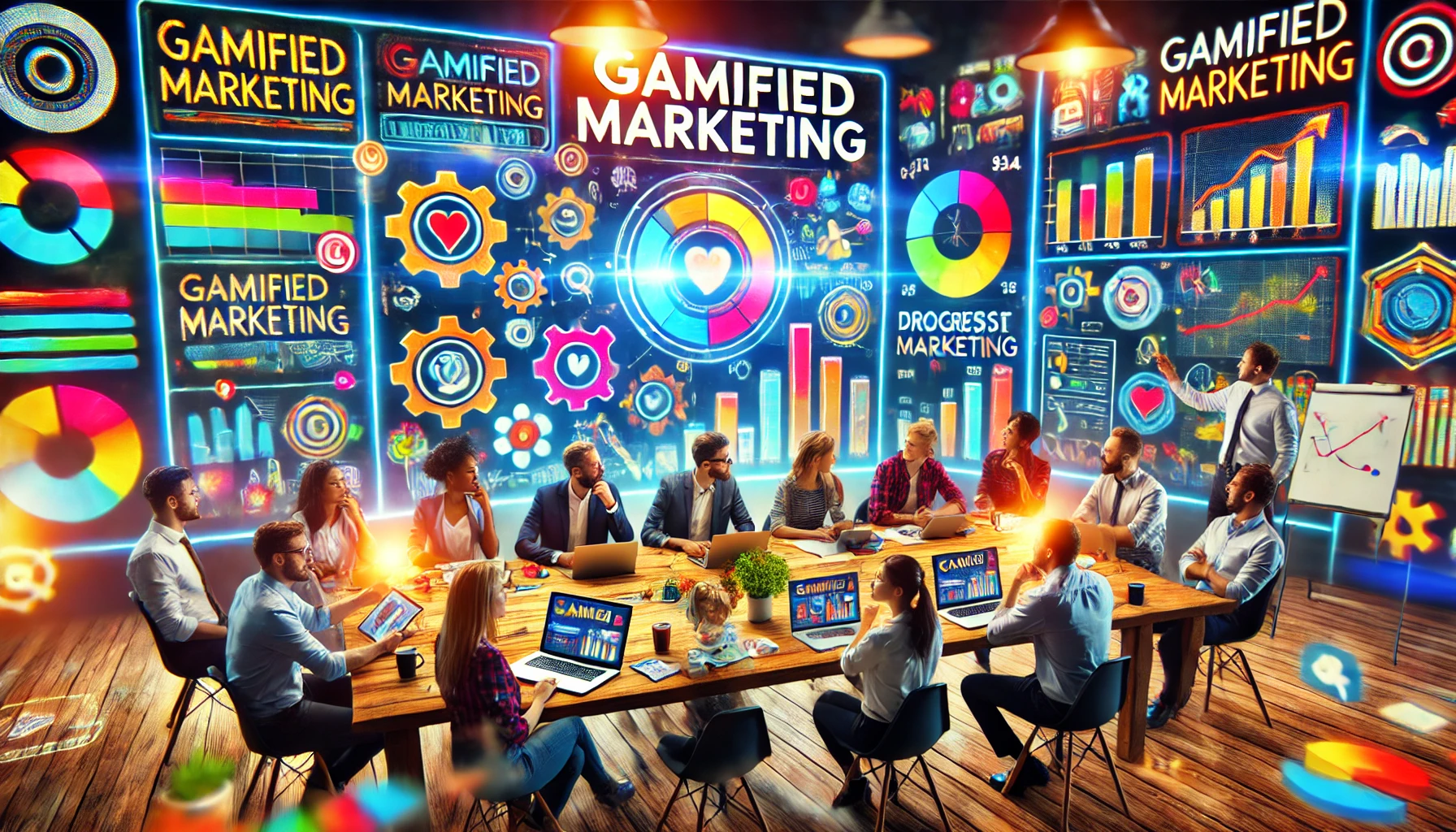
Proven Strategies to Use Gamification in Marketing Campaigns
Marketing campaigns often face the challenge of engaging and retaining customer attention. Traditional approaches can become monotonous, leading to reduced customer interaction and loyalty. However, the solution to revitalizing these campaigns lies in the innovative approach of gamification. By incorporating game-like elements into marketing strategies, businesses can significantly enhance customer engagement, increase brand loyalty, and drive higher conversion rates.
Gamification leverages the inherent human love for competition, rewards, and achievement. When integrated thoughtfully into marketing campaigns, it transforms mundane interactions into exciting experiences. This article explores the proven strategies for using gamification in marketing campaigns, providing valuable insights and practical tips for marketing firms and businesses aiming to boost their marketing effectiveness.
Gamification in Marketing Campaigns
Gamification has proven to be a powerful tool in modern marketing. According to a report by MarketsandMarkets, the gamification market is expected to grow from $9.1 billion in 2020 to $30.7 billion by 2025, at a CAGR of 27.4%. This growth highlights the increasing adoption of gamification strategies across various industries. Additionally, a study by TalentLMS found that 83% of employees who received gamified training felt motivated, indicating the potential of gamification to enhance engagement.
Moreover, companies that have implemented gamification in their marketing campaigns have seen remarkable results. For example, Starbucks' Rewards Program, which gamifies the customer experience with points and rewards, has significantly increased customer loyalty and sales. Similarly, Nike's Nike+ app uses gamification to encourage users to achieve fitness goals, fostering a community of engaged customers.
Strategies to Use Gamification in Marketing Campaigns
Incorporate Points and Rewards Systems
Implementing a points-based system where customers earn rewards for their actions, such as purchases, social media shares, or referrals, can greatly increase engagement. These points can be redeemed for discounts, exclusive products, or other incentives, motivating customers to participate actively.
Example: Starbucks Rewards Program Starbucks has effectively used a points and rewards system through its Starbucks Rewards program. Customers earn "Stars" for every purchase made using the Starbucks app. These Stars can be redeemed for free drinks, food items, and other exclusive rewards. This system not only incentivizes repeat purchases but also encourages customers to use the Starbucks app, providing the company with valuable data on customer preferences and behaviors.
Create Challenges and Competitions
Designing challenges or competitions that align with your brand can drive participation. For example, a fitness brand could host a step-count challenge, encouraging users to log their daily steps and compete for prizes. This not only engages customers but also fosters a sense of community.
Example: Nike Run Club Nike has successfully implemented challenges and competitions through its Nike Run Club app. The app regularly hosts global challenges where users can compete to achieve certain running milestones, such as the fastest 5K or the longest monthly distance. These challenges come with leaderboards and offer virtual badges as rewards, fostering a competitive and community-driven environment that keeps users engaged and motivated.
Develop Interactive Quizzes and Surveys
Interactive content such as quizzes and surveys can be gamified to collect valuable customer data while providing an enjoyable experience. Offering instant feedback, scores, and rewards for participation can enhance user interaction and provide insights for personalized marketing.
Example: BuzzFeed Quizzes BuzzFeed is renowned for its interactive quizzes, which cover a wide range of topics from personality tests to pop culture trivia. These quizzes provide instant feedback and are often shared widely on social media, driving significant traffic to the site. Additionally, BuzzFeed collects valuable data on user preferences and interests, which can be used to tailor content and advertisements more effectively.
Utilize Leaderboards and Badges
Introducing leaderboards and badges can create a competitive environment that motivates customers to achieve higher ranks. Recognizing top performers with badges or featuring them on leaderboards can encourage continuous engagement and loyalty.
Example: Duolingo Duolingo, the popular language-learning app, uses leaderboards and badges to motivate its users. The app features weekly leaderboards where users compete to earn the most points by completing lessons and practice sessions. Users can also earn badges for reaching specific milestones, such as completing a certain number of consecutive days of practice. This gamified approach keeps users motivated and engaged, encouraging consistent use of the app.
Implement Progress Tracking
Allowing customers to track their progress towards a goal, such as a loyalty tier or a personal fitness milestone, can keep them engaged. Visual progress bars, achievement unlocks, and milestone rewards provide a sense of accomplishment and encourage further participation.
Example: Fitbit Fitbit incorporates progress tracking into its fitness trackers and app. Users can set fitness goals, such as daily step counts or active minutes, and track their progress through visual graphs and progress bars. The app also celebrates milestones, such as reaching a new step count record or completing a workout streak, with virtual badges and notifications. This continuous feedback loop keeps users engaged and motivated to achieve their fitness goals.
Incorporate Storytelling Elements
Gamification can be enhanced with storytelling, where customers embark on a journey or mission related to your brand. This narrative approach makes the experience more immersive and memorable, increasing emotional connection with the brand.
Example: The My Starbucks Barista Starbucks has incorporated storytelling elements into its mobile app with the "My Starbucks Barista" feature. This virtual assistant guides users through a personalized coffee ordering journey, making recommendations based on past orders and preferences. The interactive and conversational nature of this feature adds a storytelling element to the user experience, making it more engaging and memorable.
Boost your marketing campaigns here.
Conclusion
Incorporating gamification into marketing campaigns offers a dynamic and effective way to engage customers, foster loyalty, and drive conversions. By leveraging points systems, challenges, quizzes, leaderboards, progress tracking, and storytelling, businesses can create compelling experiences that resonate with their audience. As the gamification market continues to grow, adopting these strategies can give marketing firms and businesses a competitive edge in capturing and retaining customer interest.
